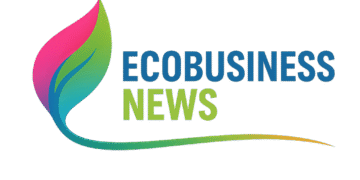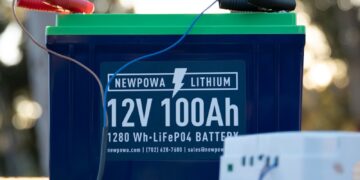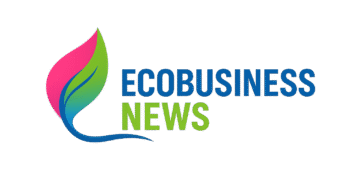The Crossroads of Climate, Capital, and Capacity
2025 marks a historic turning point for the U.S. energy and sustainability sectors. With massive federal funding finally trickling down from the 2022 Inflation Reduction Act (IRA), and the newly passed Clean Infrastructure and Security Act of 2025, the country is racing to balance green ambitions with economic realities.
From California to Texas, from Midwest cornfields to coastal grids, America is undergoing a renewable reboot—and not a moment too soon.
We are finally seeing:
- Unprecedented investments in solar PV and battery storage
- A national pivot toward microgrids and decentralized energy
- Accelerated decommissioning of aging fossil infrastructure
- Startups and public-private partnerships emerging in energy innovation
But it’s not all smooth sailing. And the stakes couldn’t be higher.
The Solar Surge
Solar isn’t just booming—it’s ballooning. According to the latest data from SEIA and Wood Mackenzie, the U.S. is on track to install 40 GW of solar capacity in 2025, breaking every previous record.
Incentivized by investment tax credits, grid upgrade funds, and local permitting reforms, commercial and utility-scale developers are flooding the market. The sunbelt states—California, Texas, Arizona, and Nevada—remain hotspots, but colder regions like Minnesota and Maine are seeing surprise growth, thanks to community solar models and bundled battery deals.
One affordable and efficient product gaining popularity among homeowners and small businesses is the Jackery Solar Generator 300—perfect for emergency backup and portable solar charging needs.
Battery Storage: The Quiet Giant
If solar is the star, battery storage is the backbone of the clean energy transition. The U.S. added 11.2 GWh of grid-scale storage in the first half of 2025 alone, and analysts expect a total of 28+ GWh by year’s end.
Key drivers include:
- Skyrocketing utility prices forcing large manufacturers and data centers to seek independence
- Smart incentives for standalone storage and time-of-use arbitrage
- EV adoption creating demand for second-life lithium batteries
For homeowners and preppers, the EF ECOFLOW Portable Power Station has become a favorite—solar compatible, lightweight, and capable of running essential devices during outages.
Grid Resilience and the Microgrid Movement
Extreme weather events and cyber vulnerabilities have exposed our aging electric grid. In response, both the federal government and private sector are embracing microgrids—localized energy systems that can operate independently from the central grid.
Recent deployments:
- Military bases across the U.S. are building renewably powered, cyber-secure microgrids
- Rural towns are setting up solar-plus-storage hubs to avoid lengthy outages
- Data centers are leading the way with multi-layered microgrid blueprints blending solar, fuel cells, and battery systems
More than just backup, storage is evolving into a flexible trading asset—used for peak shaving, grid services, and emergency preparedness.
At the consumer level, home comfort and efficiency matter more than ever. Products like the Levoit Air Purifier for Large Rooms help maintain air quality while staying energy efficient, especially during wildfire season or heatwaves.
Carbon Markets, ESG, and Corporate Responsibility
The pressure on corporations to show meaningful sustainability metrics is mounting. Carbon credits, once viewed as optional, are becoming baseline. Publicly traded companies now face scrutiny from investors, regulators, and eco-conscious customers.
Expect 2025–2026 to be the tipping point where:
- ESG compliance becomes mandatory across major industries
- Digital MRV (monitoring, reporting, verification) tools gain adoption
- Companies shift from carbon offsets to carbon insetting—tangible, on-site impact
And at the grassroots level, many households are participating in the sustainability movement in small, meaningful ways. The AeroGarden Harvest Indoor Garden allows people to grow herbs and veggies at home using low-energy LED grow lights, minimizing pesticide use and food miles.
The Bad News: Friction and Fragmentation
Despite momentum, obstacles remain:
- Grid congestion is delaying interconnection for thousands of megawatts of clean energy projects
- Local politics in some states are rolling back net metering or complicating clean energy permits
- Supply chain bottlenecks continue for transformers, smart inverters, and lithium materials
And perhaps most worrying: federal polarization threatens long-term consistency. A change in political leadership could erode key incentives or slow permitting reform.
What Comes Next?
As the planet warms and global energy demand soars, the question is not if we transition, but how quickly. 2025 is shaping up to be the year that energy, climate, and economic policy collide—and what emerges will define the next generation of American growth.
Whether you’re a builder, investor, policymaker, or simply a concerned citizen, now is the time to lean in. The infrastructure we build today will power the world we live in tomorrow.
EcoBusinessNews.com
Reporting at the Intersection of Clean Energy and the Future
For syndication or interviews: info@positivephil.com



















